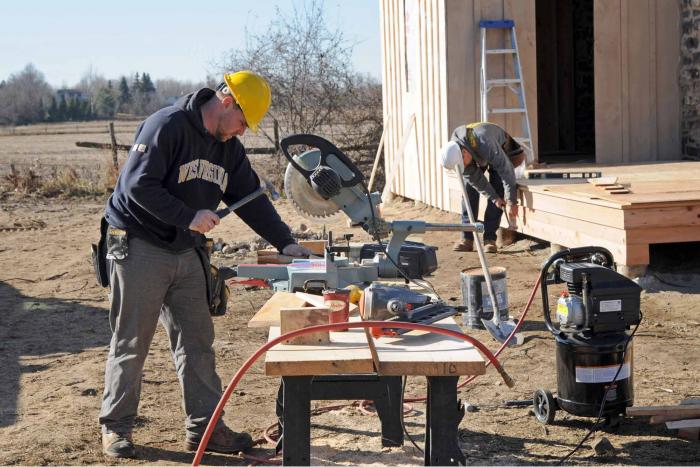
You might consider using a 23 gauge Arrow pin nail for small projects. These nails can be used for fine trim work on hardwoods, such as doors and windows, and are also an economical choice for your home. You can use most nailers of 23 gauge to make pin nails. This article will explain more about pin nails. Here are some tips to choose the perfect nail for your project.
23-gauge Arrow pin nails
The 23 gauge Arrow pin nails are among the most short and thinnest finishing nails. They are used for trimming, picture framing, and general repairs. These nails do not leave a nail head and can be used with the Arrow PT23G pneumatic nailer. You should only use these nails for small projects. These are some of the things to consider when selecting nails.
This pin nailer, 23 gauge, is available in pneumatic or cordless versions. Its headless pin nails and adjustable exhaust cover are perfect for trim work and hobby projects. This pneumatic nailer uses a 120 PSI air compressor. The magazine is easy to load. This versatile tool is lightweight and has dual trigger safety. You can use this nailer in a variety of situations, from attaching thin molding to installing beads.

1" Electro Galvanized Arrow pin nails in 23-gauge
These 1,000-count, colated-headless Arrow pin nail sets are made of 234-gauge stainless steel. These are great for trimming work and compatible with the PT23G pneumatic nailer. They don't have a head so they won't show up when they're screwed into wood. These nails are excellent for cabinet repair. They are available in three sizes, ranging from 3/8" to 1.
The PT23G pin nailer is lightweight and compact. It is great for small jobs. It has a removable exhaust cover with adjustable length and comes complete with all fittings required to start or finish nails. Quick-load magazines allow you to securely nail small bits of trim without creating a visible hole. The PT23G is compact and easy to use. This will make your project more enjoyable.
Surebonder 23-gauge Arrow pin nails
Pin nailers Surebonder 23 Gauge Arrow are suitable for many applications. These pins are 1-3/8" long and 23 gauge, making them ideal for craft work, picture frame assembly, and glazed bead application. These pins can be used with any 23-gauge pin nailer, including Surebonder's 9710 micropin nailers. Here are some advantages of using 23-gauge nailers. Continue reading to learn more.
The Surebonder Arrow pin nailer 23-gauge is simple to use. It comes with 2000 7/8”-long, 3/4” pin nails and 1/4” plug with cap. It is lightweight and comes in a protective carry case. All necessary o rings are included in this safety mechanism to rebuild the tool. However, the trigger mechanism does not. Wear safety glasses whenever you use this tool.

23-gauge Electro Galvanized Arrow pin nails
If you're looking to buy extra-thick nails for your home improvement project you might have heard of the 23 gauge electro galvanized Arrow nail. These nails are packaged in a set of 1000 and designed to be used with Arrow’s PT23G hydraulic pin nailer. They are available in sizes from 3/8 inch to one inch. Because they do not have a head nail, they will not show up when they are nailed to wood. They are perfect for cabinet repairs as there is no visible nail hole. They have a limited holding capability so be aware that you might need to use putty to protect them.
The PT23G Pneumatic Pin Nailer from Arrow is a great tool for trimming projects, crafts and hobby work. The PT23G Pneumatic Pin Nailer from Arrow is lightweight and compact. It also features an adjustable exhaust cover, contact safety and an easy to load magazine. It can also be used with 120 PSI home compressor units. The tool also comes with all fittings necessary for a fast and easy job.
FAQ
What is the difference of plywood and particleboard?
Plywood can be described as a mixture of layers and wood that have been pressed together with pressure. Plywood comes with a range of thicknesses, and it is most commonly used for flooring and cabinets. Particle board is made from sawdust mixed with resin and then compressed into large blocks. It is used primarily for home improvements. Both boards can be cut easily and are both durable.
What wooden items do you sell well?
The most successful wooden items are made from sustainable wood.
Most furniture is made from oak, maple, mahogany or walnut.
These woods not only have great strength, but also beautiful patterns and colors. If they are well cared for, they can last many years.
Wooden furniture should always be painted first to protect against moisture damage. This applies to all surfaces including drawers, doors, handles, and handles.
Choose a paint with water resistance if you want furniture to last as long possible.
Use a high-quality, oil-based primer and two coats of topcoat. Depending on how often it will be worn, you may need to apply several coats.
You should avoid using aerosol paints or spray cans. These products have solvents that evaporate quickly, leaving behind dangerous fumes.
How often do I need to buy new supplies
You will likely need to replace some tools over time. Sharpening hand tools is a must. Power tools will require replacement parts every so often. Try spreading your purchases over a few months so you don't buy too many at once.
Where can I buy hardwood lumber?
Home Depot has hardwood lumber for sale. You can find all types of wood products at Home Depot, such as flooring, cabinets and furniture.
They also have an extensive selection of engineered hardwoods such as Ipe (Araucaria Angustifolia), Brazilian Cherry (Pau d'Arco), and Mahogany (Swietenia Macrophylla).
These woods can also be purchased online by simply searching Google for "hardwood timber"
How long does a piece take to finish?
It all depends on what type of wood you use, how complex your design is, and how much finishing you use. Hardwoods are more difficult to maintain than softwoods. Hardwoods also tend to be more expensive than softwoods. They last longer and are more resistant to moisture. The process of finishing a piece of furniture typically takes anywhere from one week to three months.
Statistics
- Woodworkers on the lower end of that spectrum, the bottom 10% to be exact, make roughly $24,000 a year, while the top 10% makes $108,000. (zippia.com)
- In 2014, there were just over 237,000 jobs for all woodworkers, with other wood product manufacturing employing 23 percent; wood kitchen cabinets and countertop manufacturing employing 21 percent. (theartcareerproject.com)
- The U.S. Bureau of Labor Statistics (BLS) estimates that the number of jobs for woodworkers will decline by 4% between 2019 and 2029. (indeed.com)
- The best-paid 10 percent make $76,000, while the lowest-paid 10 percent make $34,000. (zippia.com)
External Links
How To
How to make wood joints
This tutorial will show you how to join two pieces of wood together. We will use the pocket hole joint, which is drilling holes in the wood to join them. This method works great if your wood is straight and smooth. Try dowel joinery instead if your wood doesn't look straight. Here are the steps
-
Drill Pocket Hole Joints. To start, measure and mark where you want to put the pocket hole joint. With a handheld drill machine or jig saw, drill 3/4-inch deep holes in the ends of each piece.
-
Sand Smooth. Sanding the wood's edges will ensure that the joint doesn't split.
-
Glue Together Apply glue to both ends of the wood. Let the wood sit for 5 minutes, then clamp it together.
-
Clamp the Pieces Together. After the glue has dried thoroughly, secure the pieces so that they are flush.
-
Trim Joinery. Trim the excess wood around the joint after the glue has dried completely.
Allow enough space between pieces so you can turn them inside out.